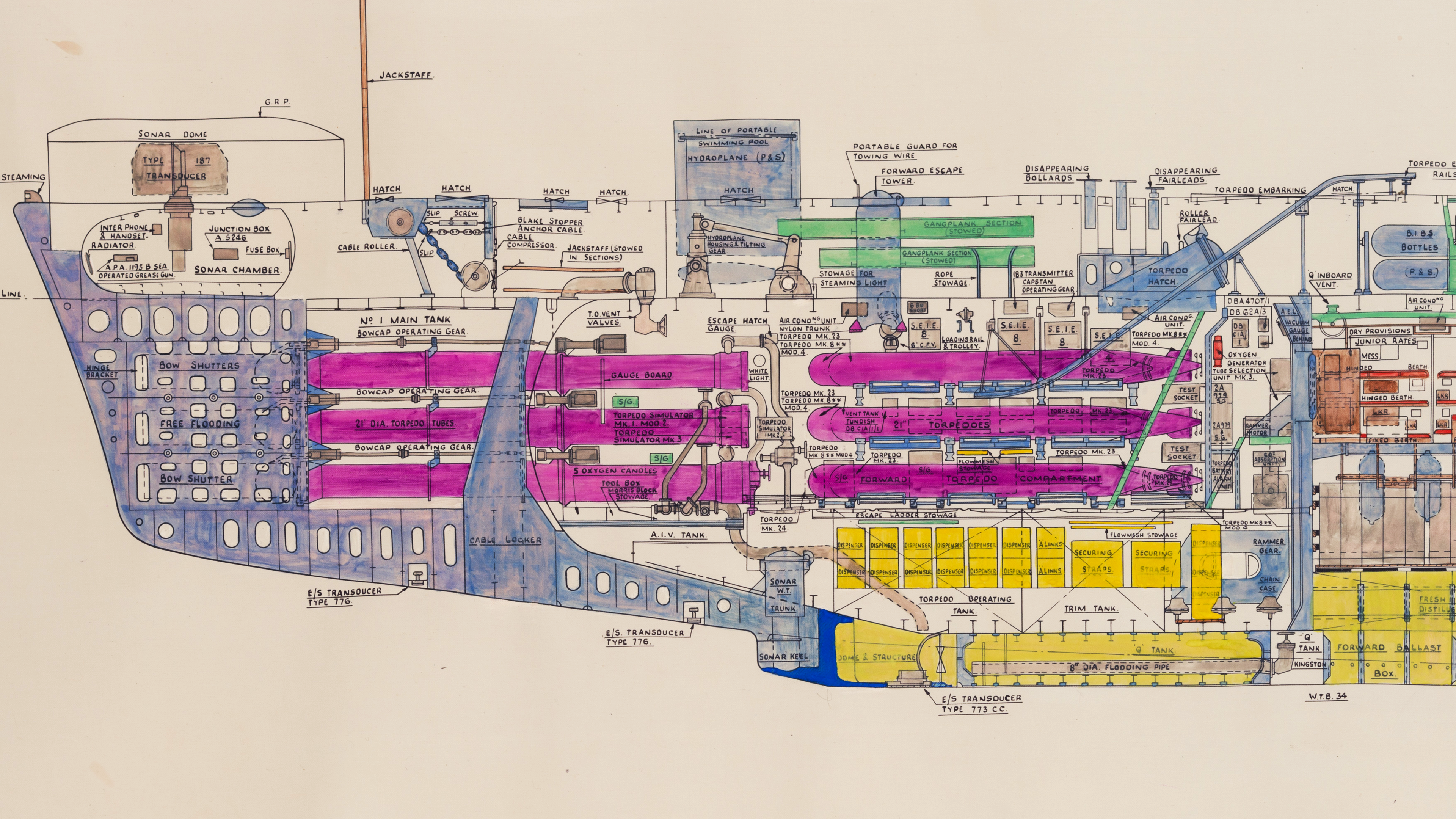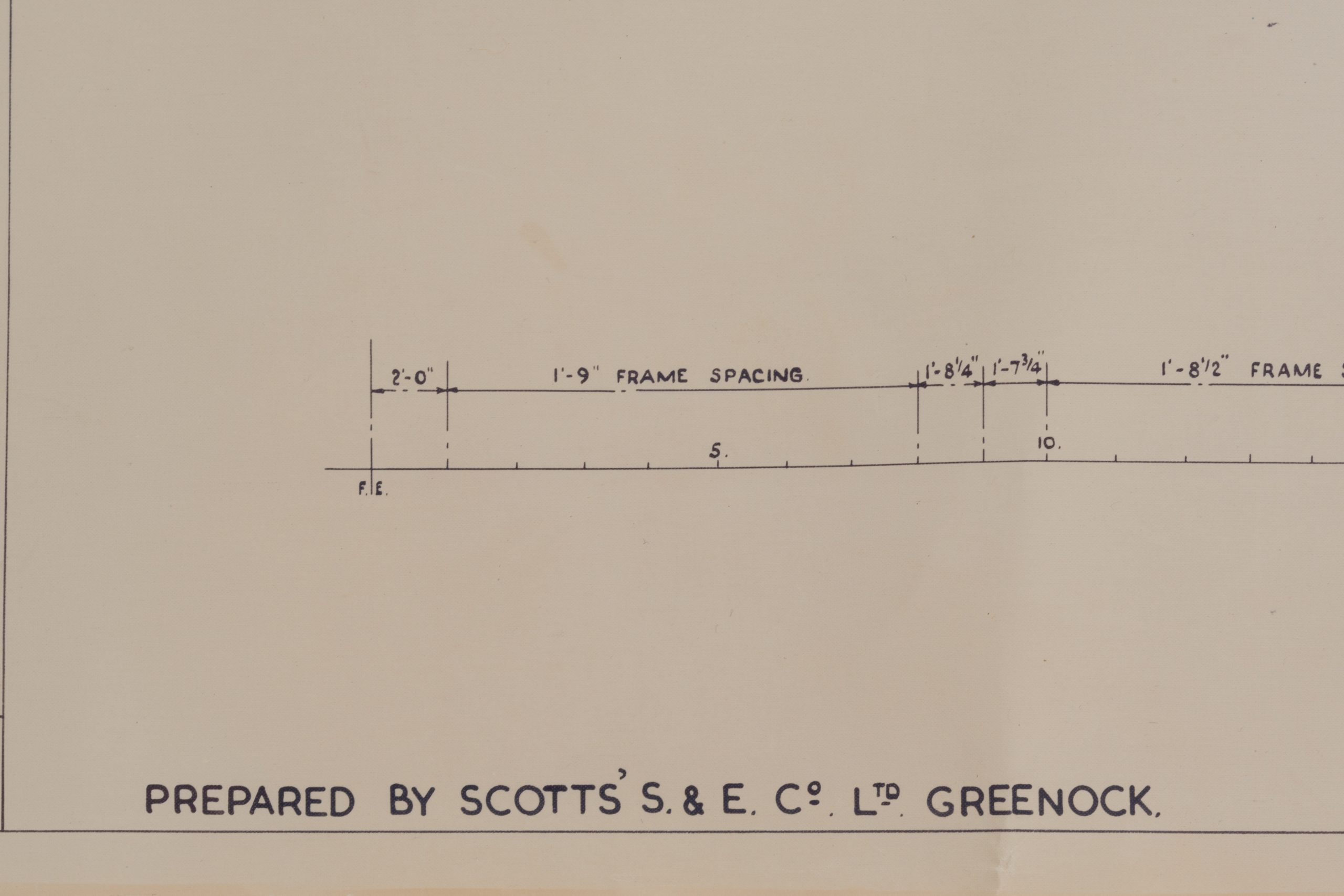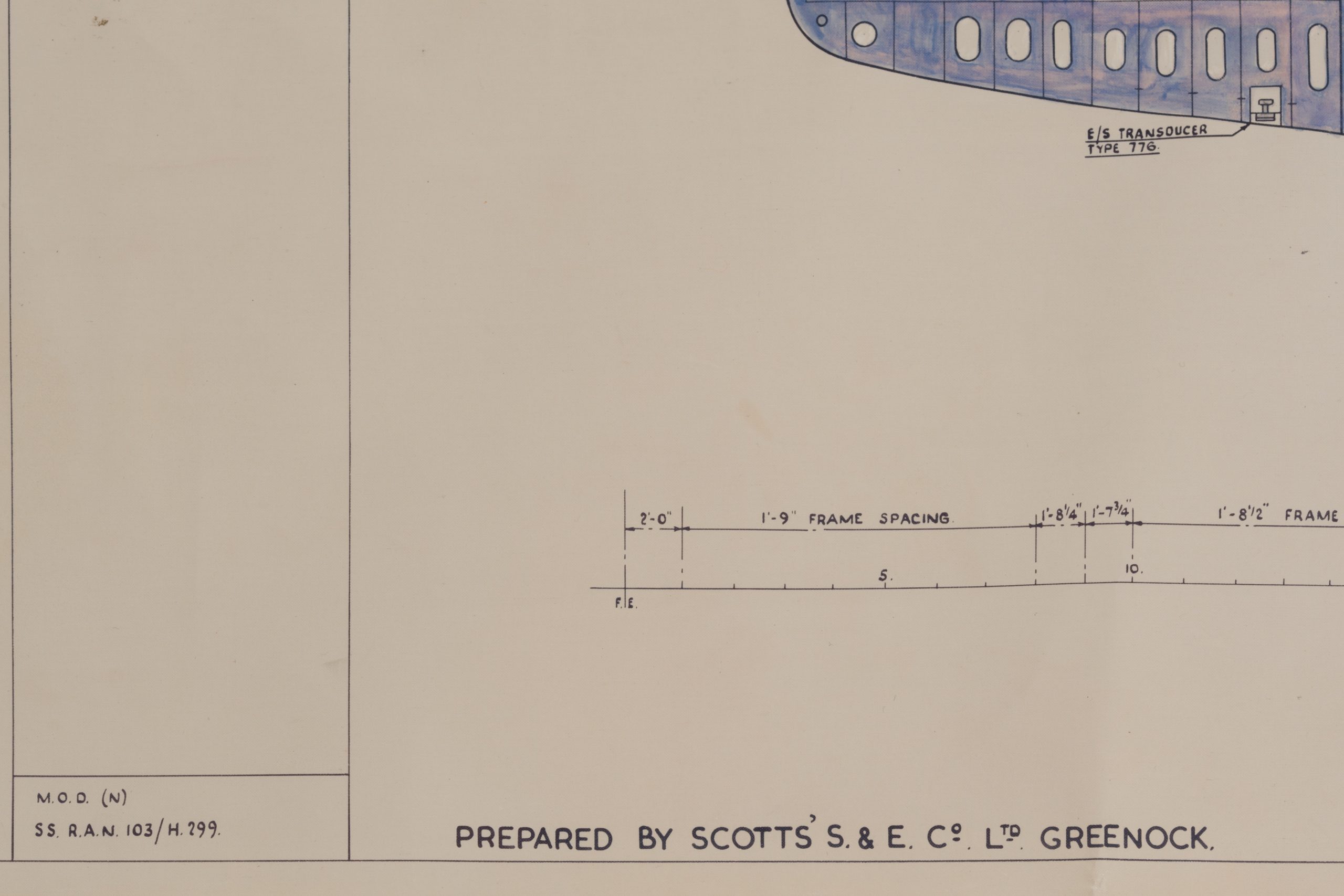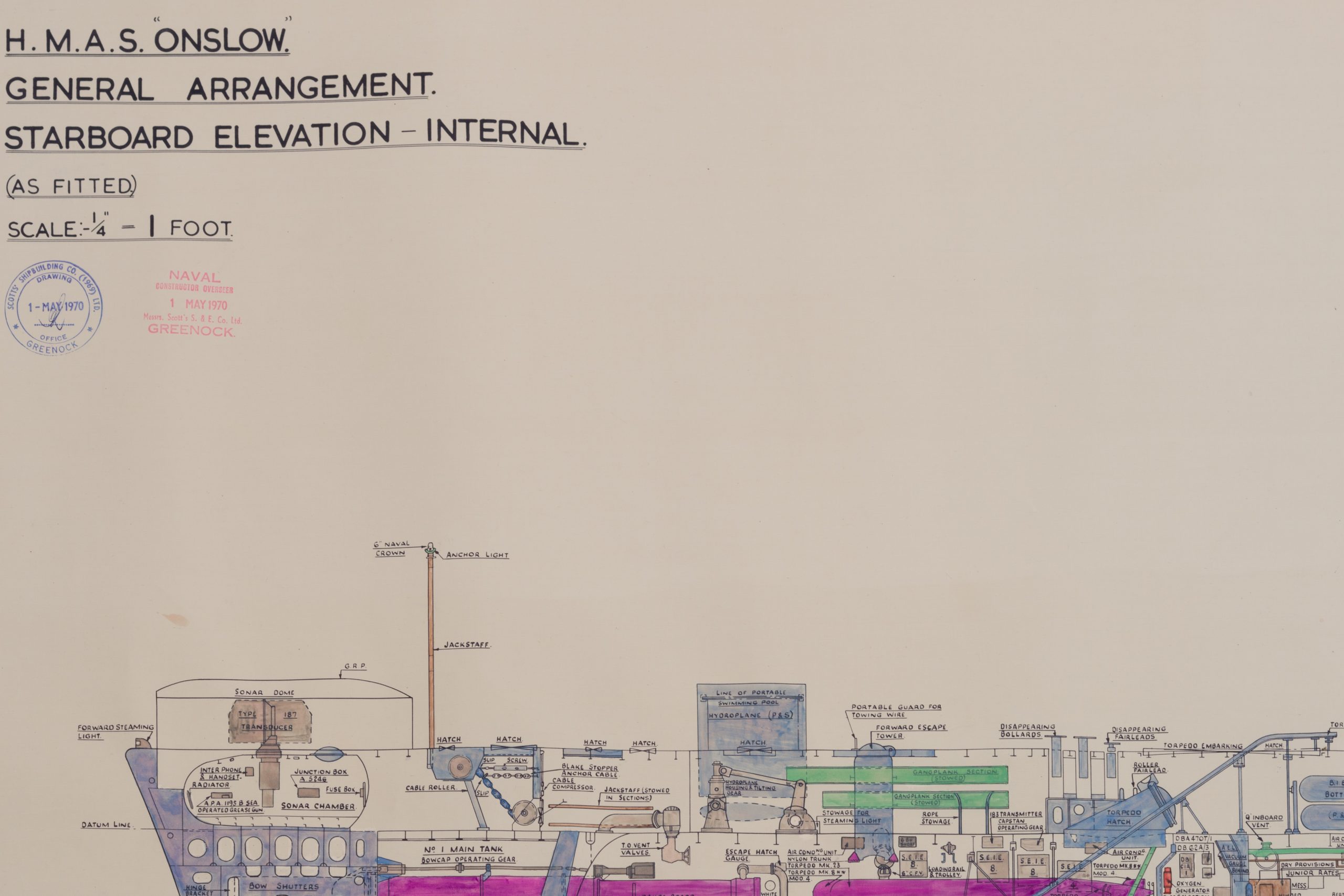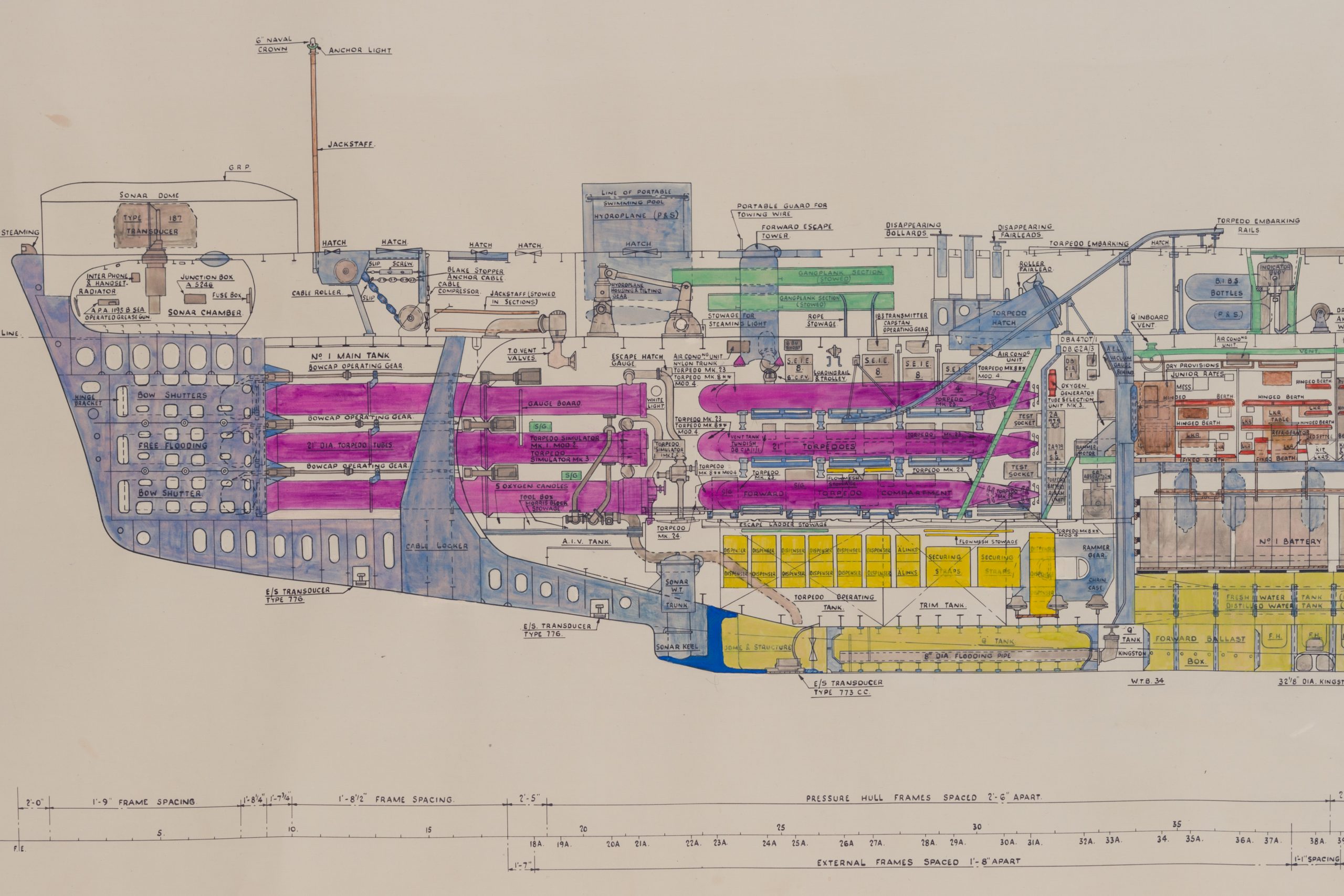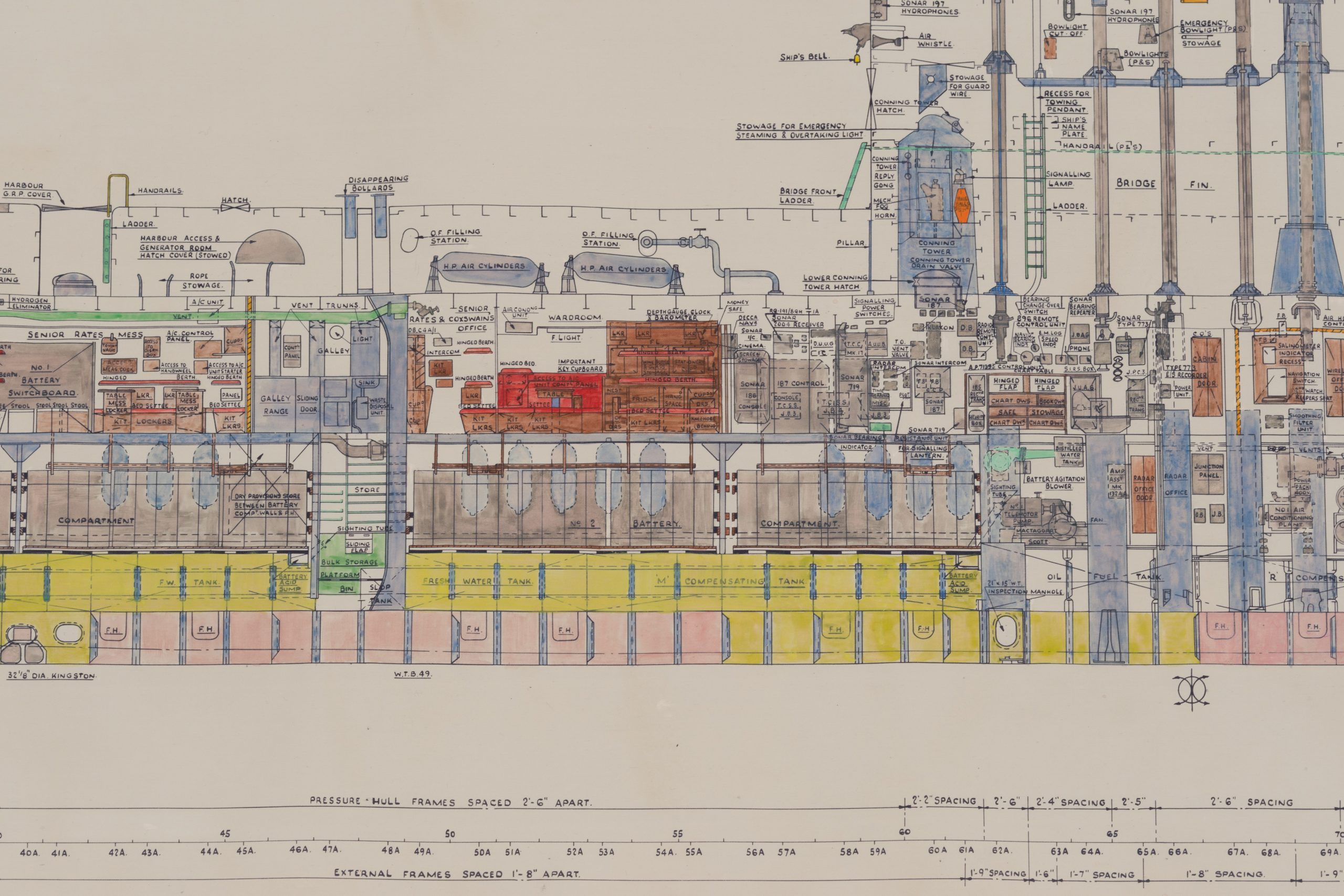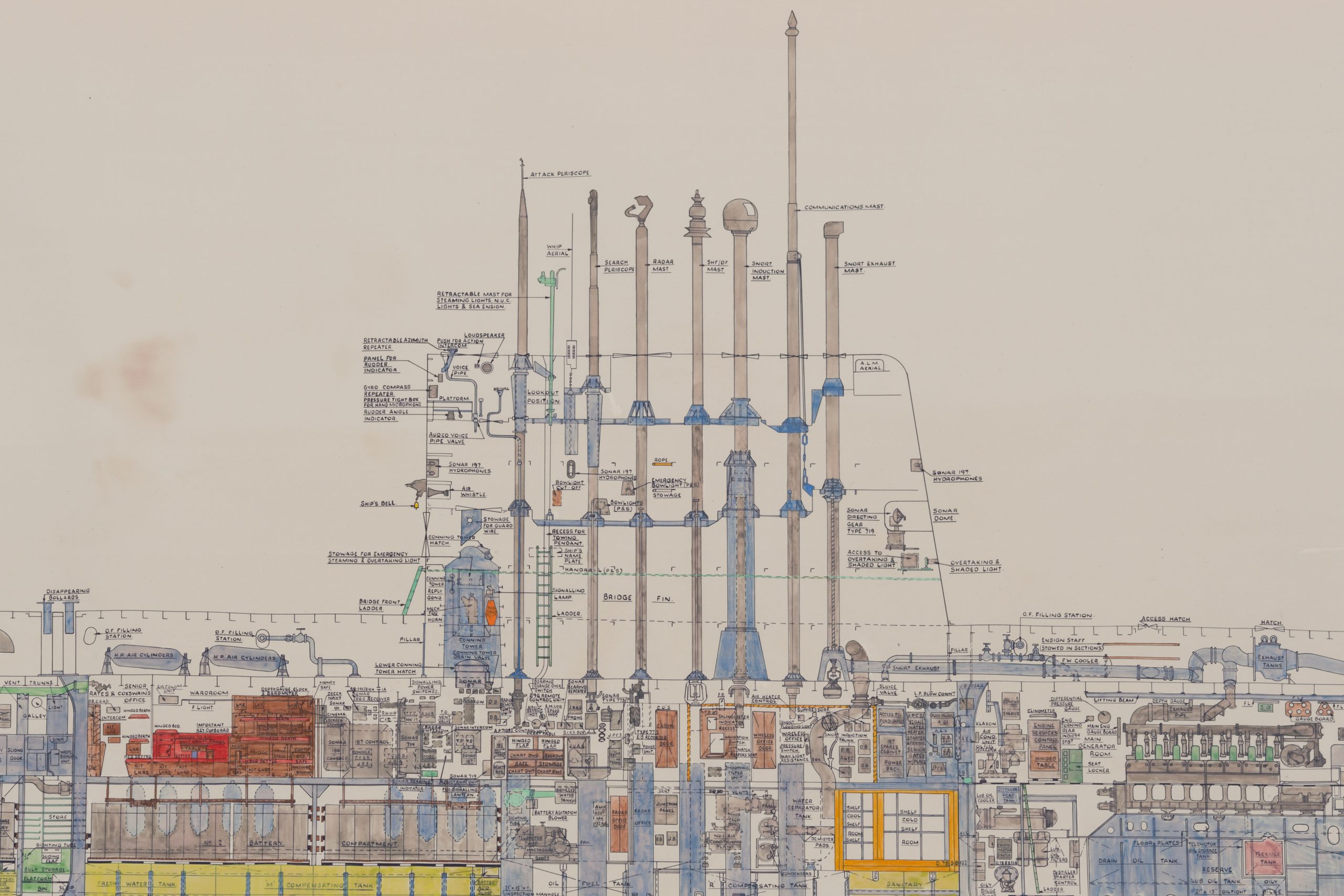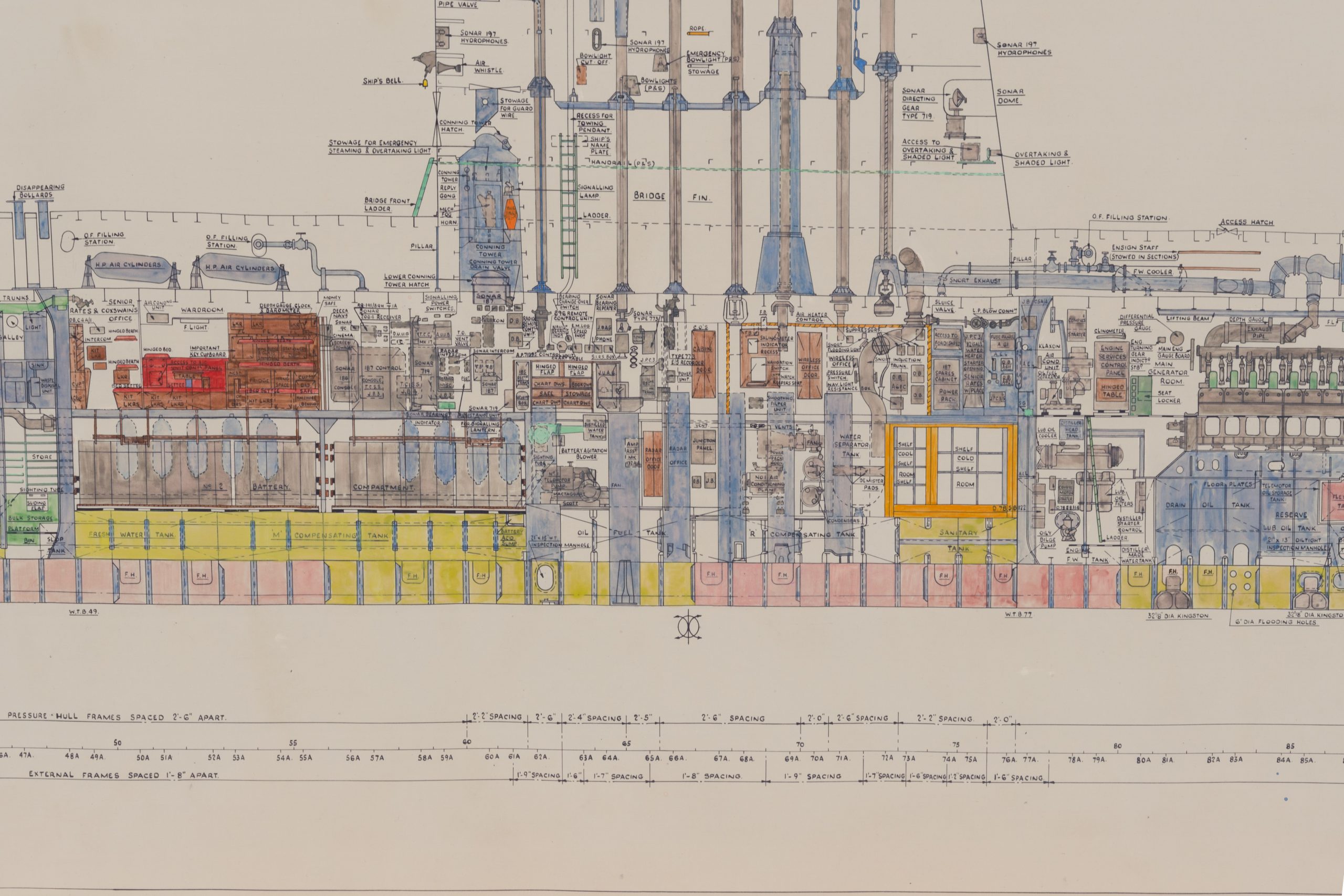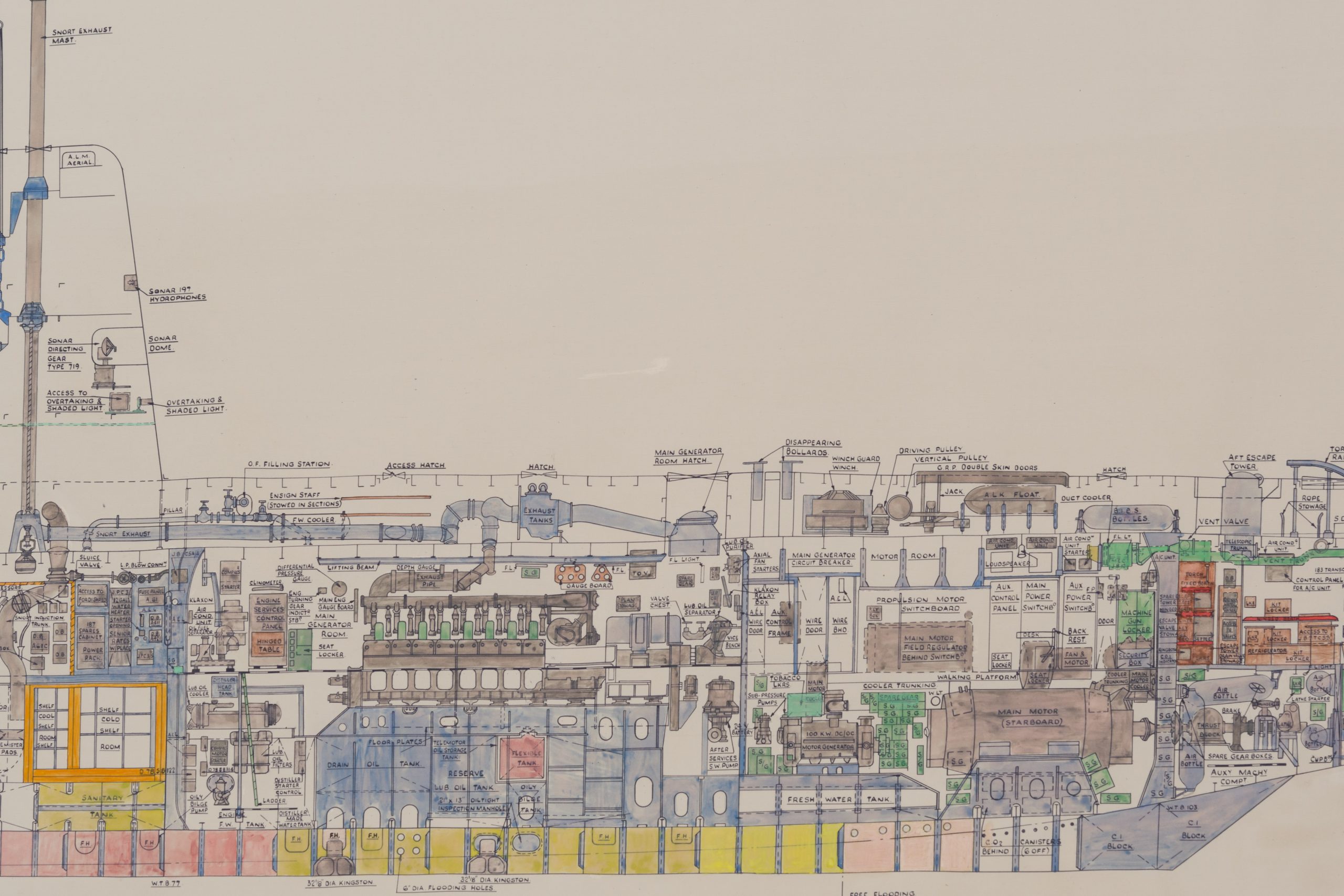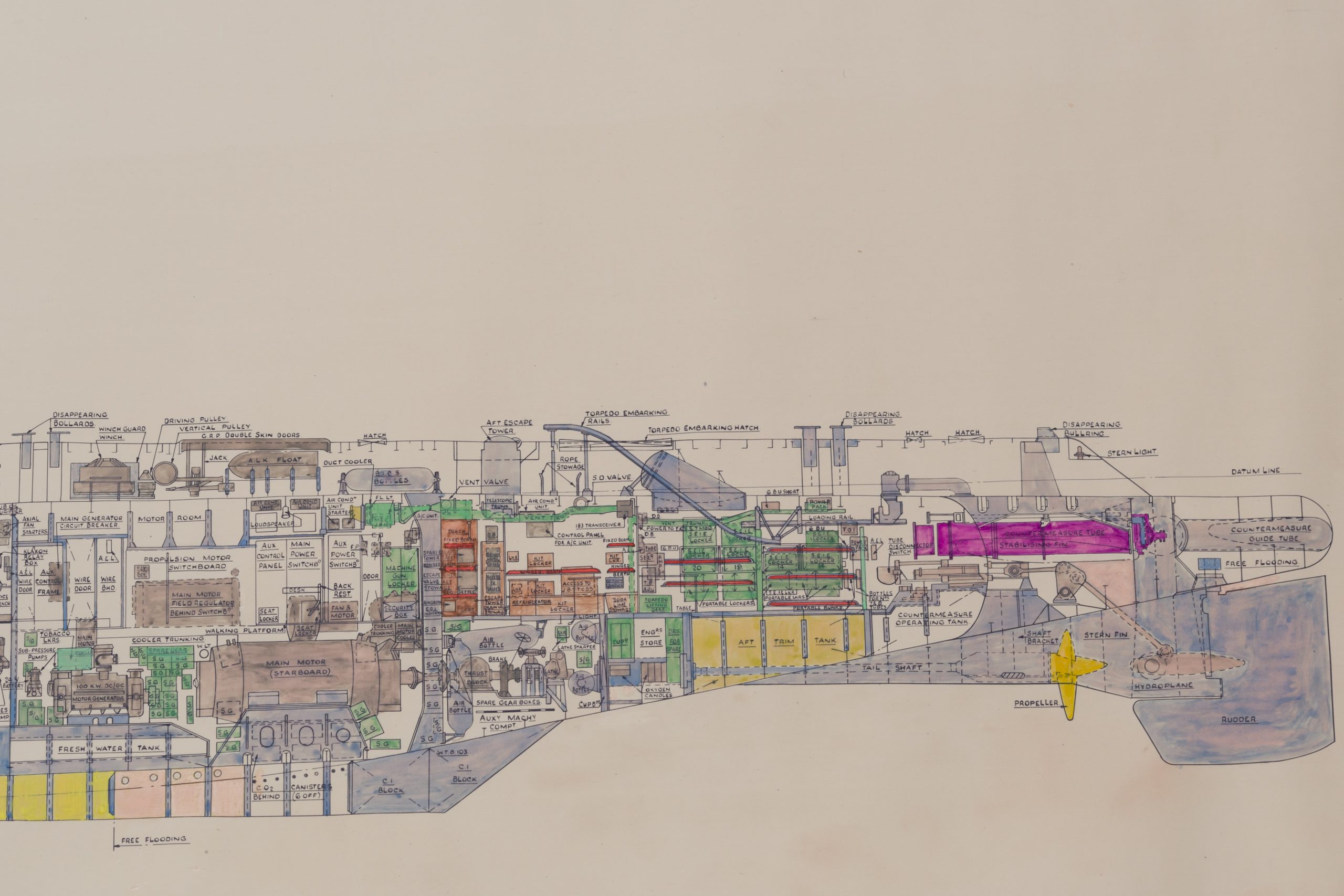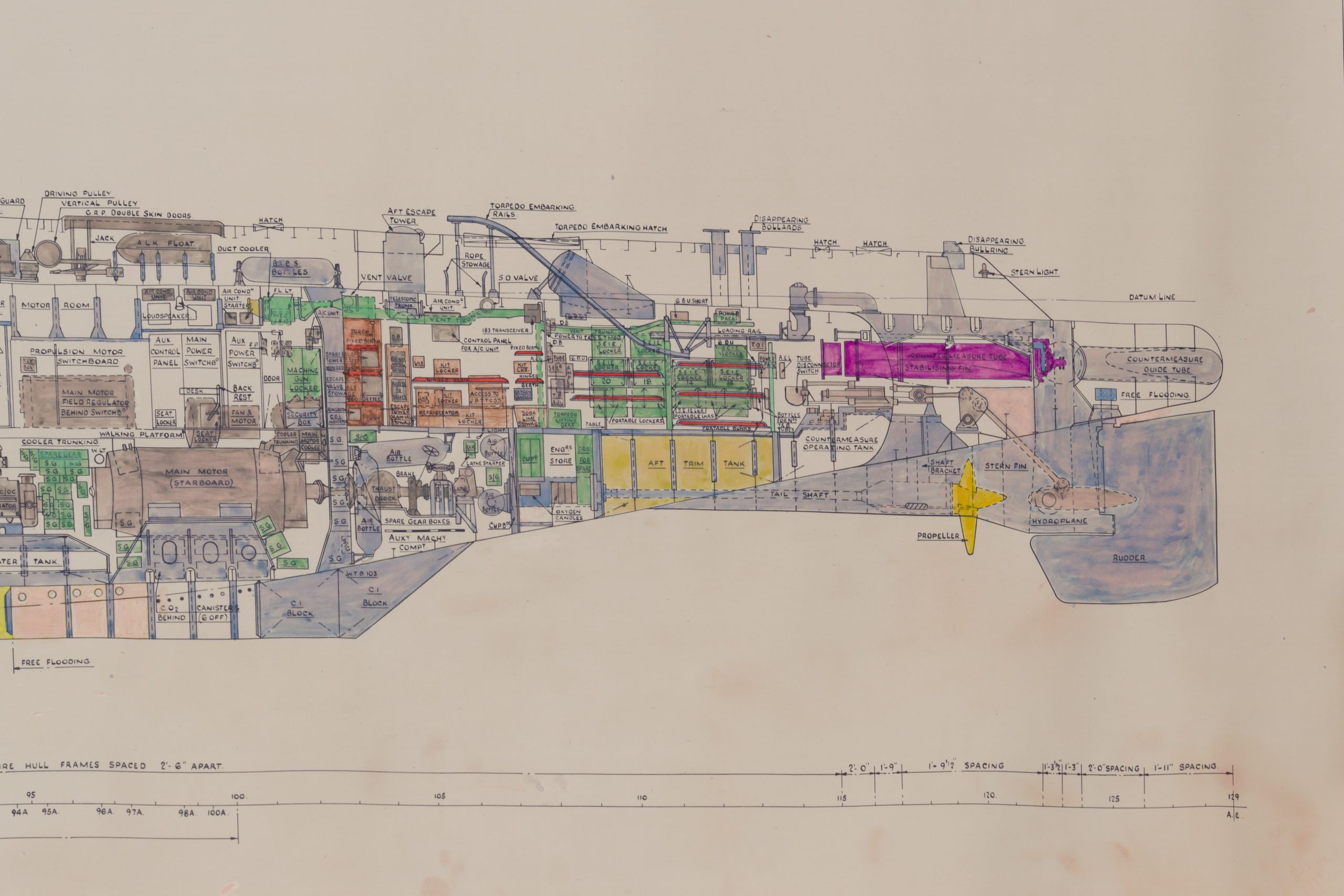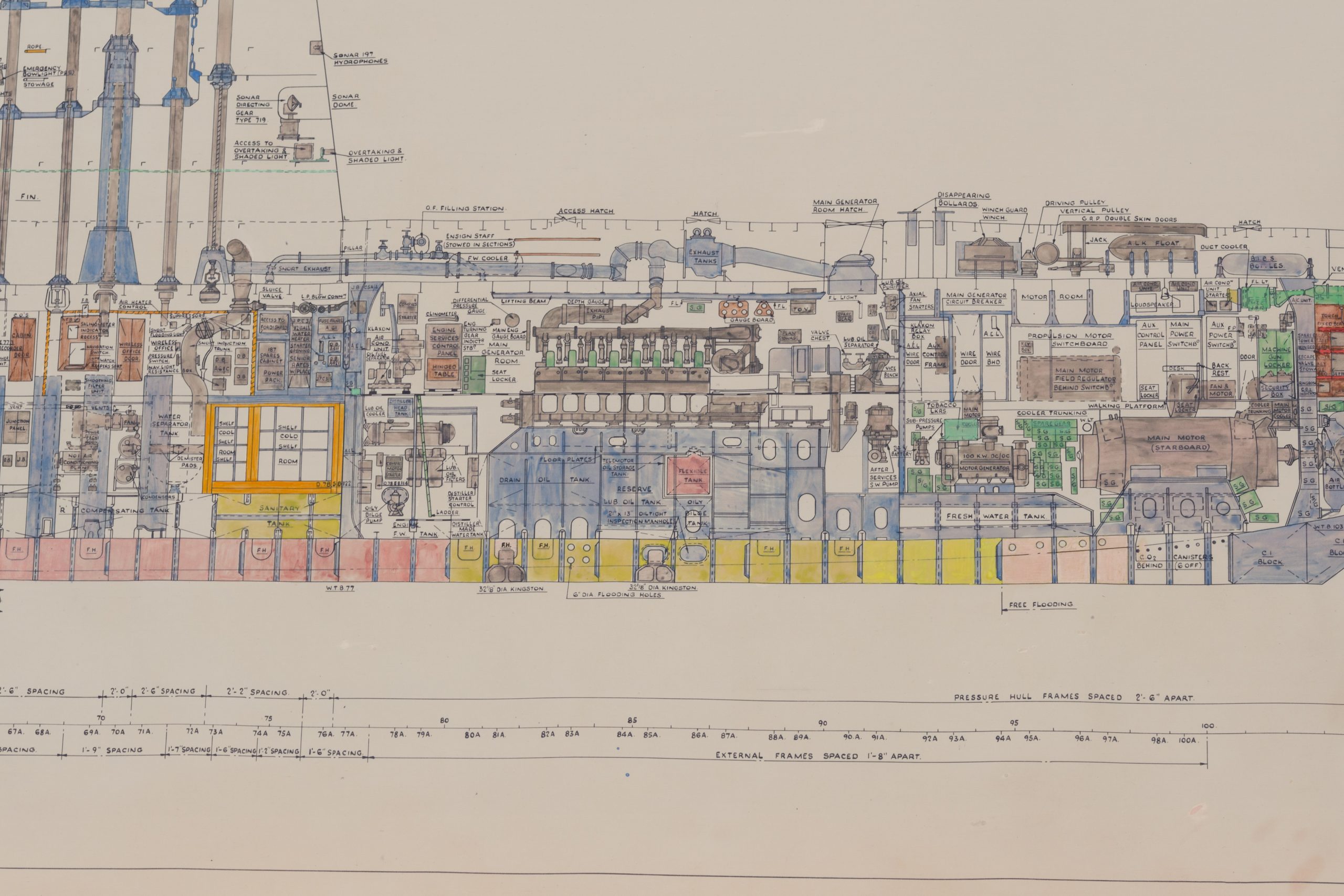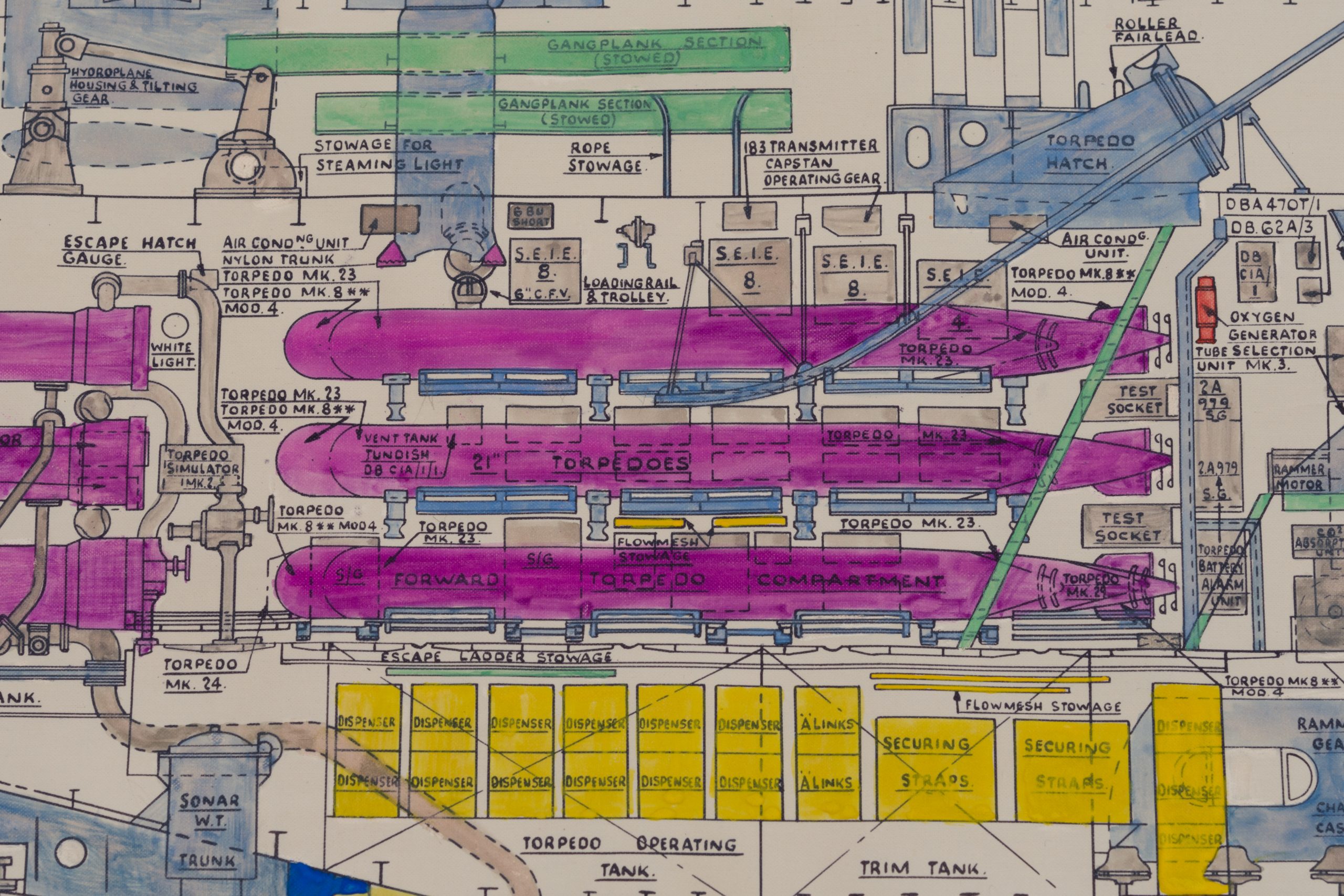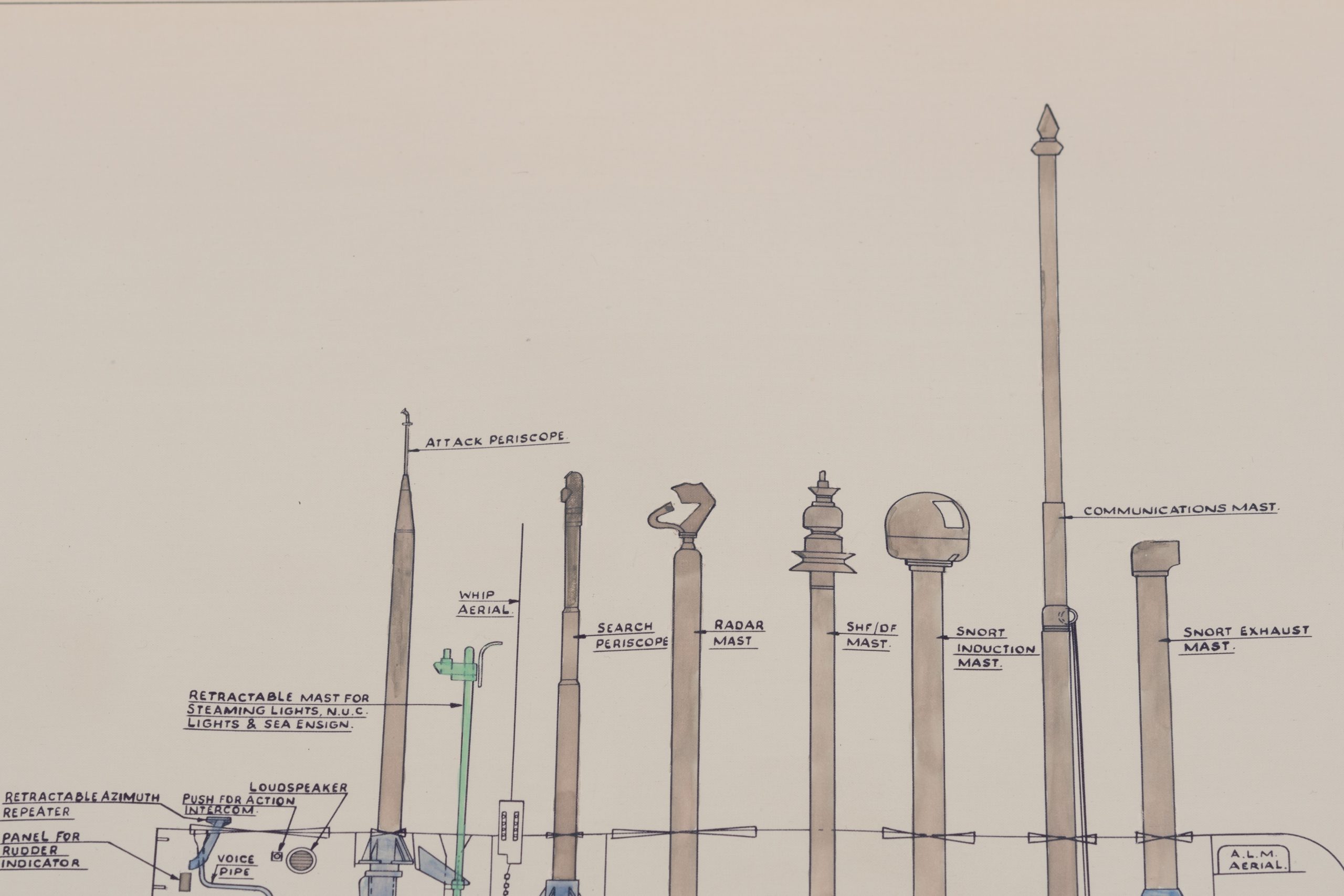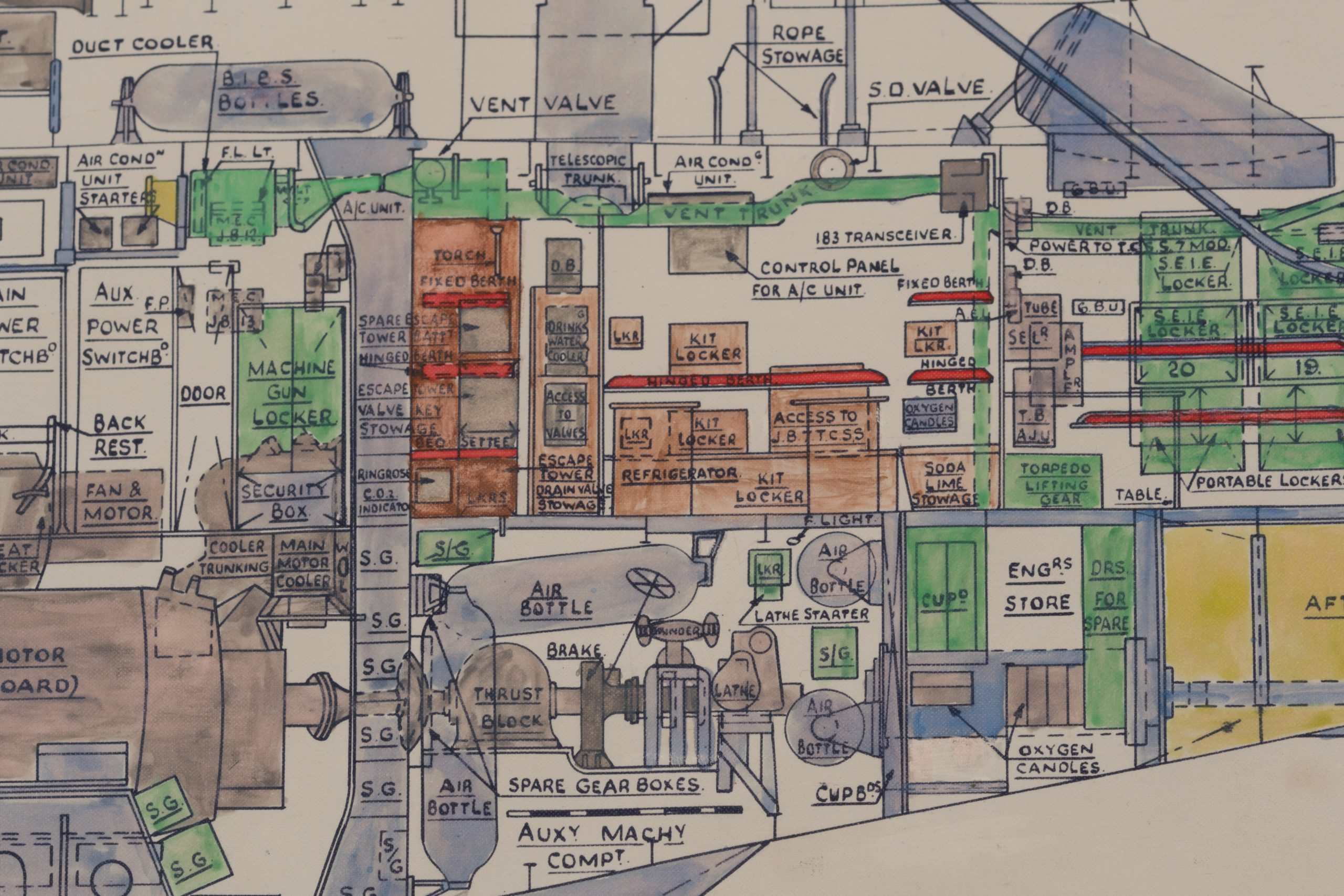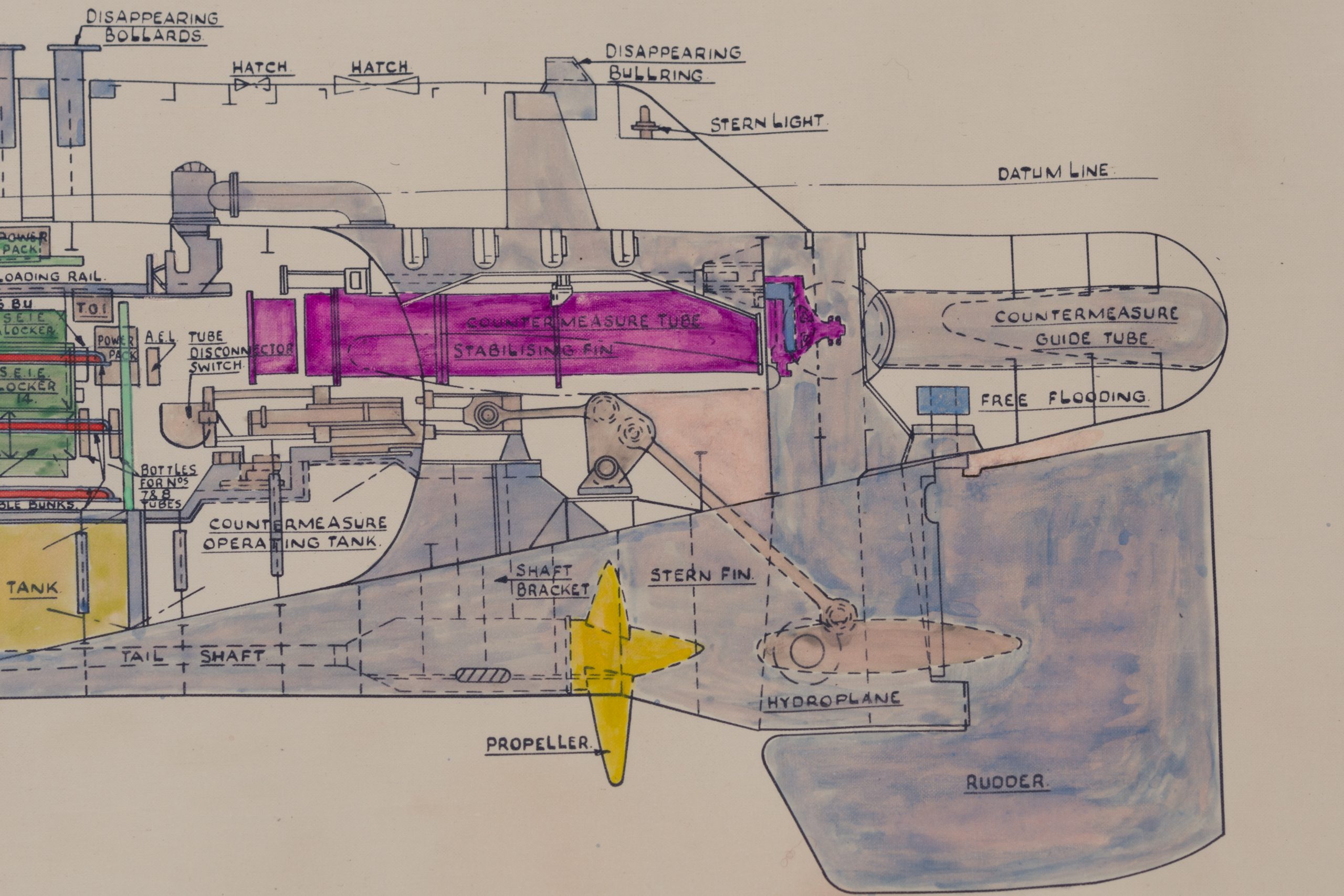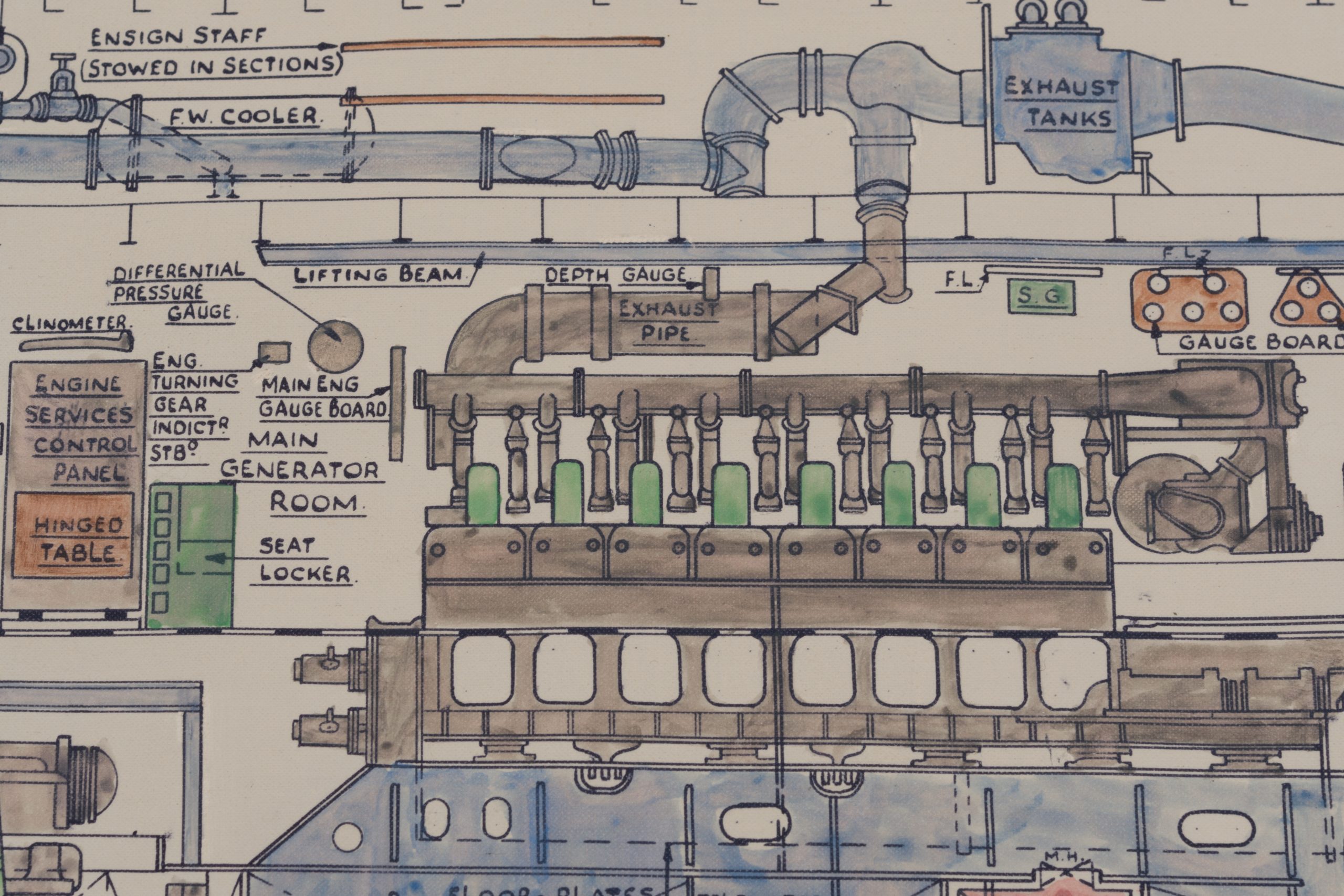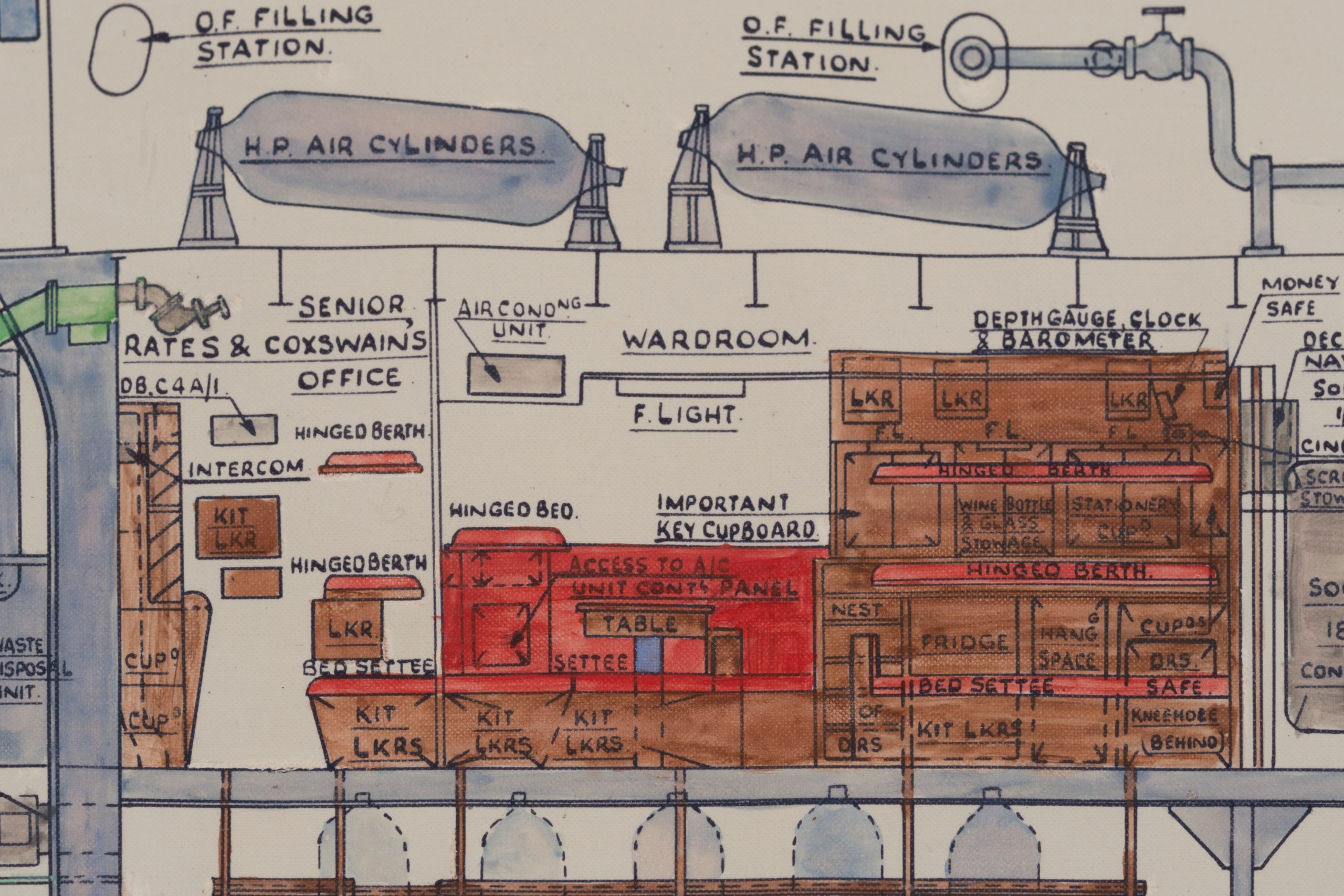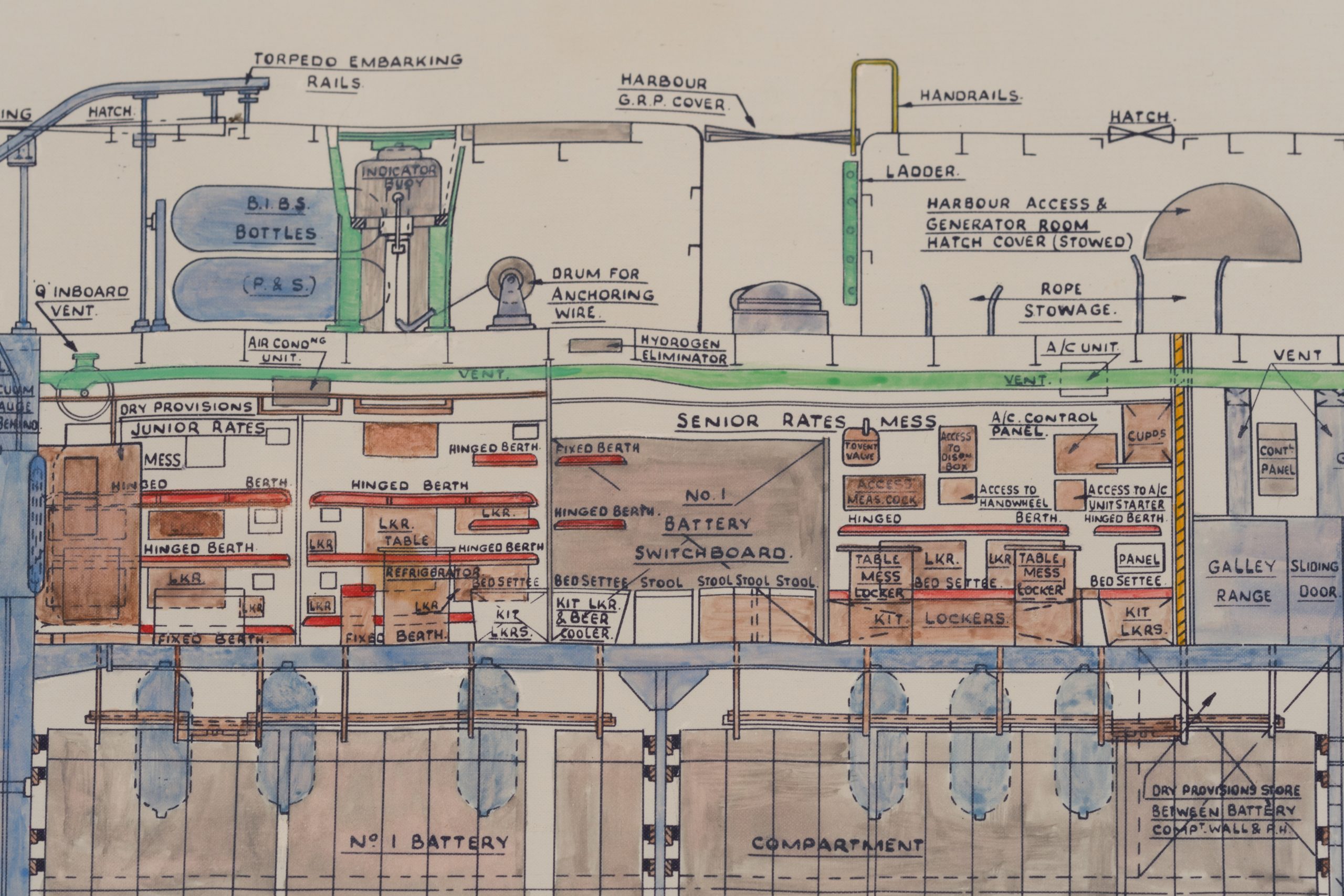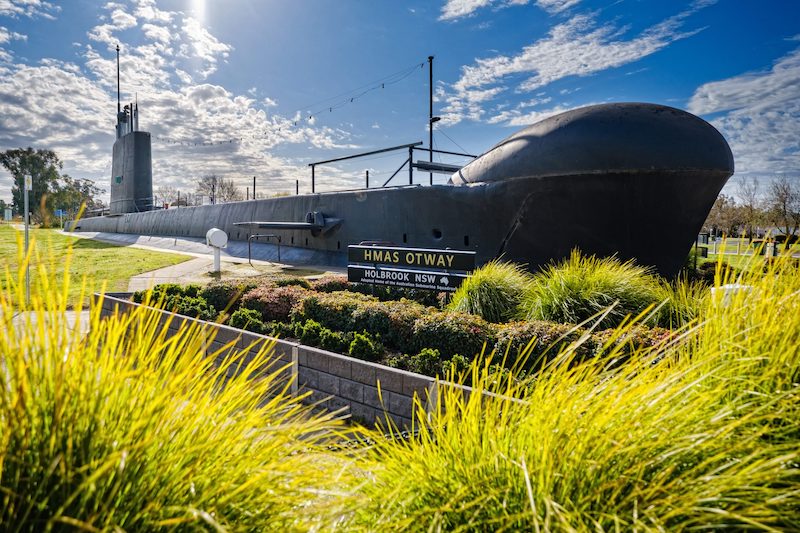Innovation and Controversy
The Complicated Legacy of the HMAS Onslow
Scotts Shipbuilding and Engineering Company was in operation for 282 years and in that time they gathered some powerful clientele. Namely, the British Royal Navy and Royal Australian Navy (RAN). This is the plan for an Oberon-class submarine that the company would go on to build for the RAN in 1967, the HMAS Onslow.
The Oberon-class referred to a certain type of British-designed submarine produced by four shipyards between 1957 and 1978. This plan shows the incredible complexity of this military submarine and all that the design must accommodate, like berths for the officers and crew; colossal engines and batteries; and, in this case, eight torpedo tubes with 6 x 21 inch (53cm) forward- and two pre-loaded Mk20S torpedoes in the stern tubes. These two tubes were converted to storage in the 1980s.
The Onslow also had some unique characteristics. Previously, the position of a submarine could be given away any time rubbish was thrown out and floated to the surface. This was resolved through the installation of a ‘gash ejector’ which ejected refuse in weighted rubbish bags which sunk to the ocean floor.
Though Onslow never participated in active combat itself, the vessel still managed to travel the equivalent of more than 16 times around the world. However, the commission was not without controversy.
After a sailor disobeyed orders in 1972, the submarine dove to almost twice the safe operating depth which led to the RAN removing the ability to conscript sailors to submarine service – making it ‘volunteer-only.’
In 1981, a sailor, Christopher John Passlow, died from inhaling diesel fumes that had flooded the submarine after an engine malfunction.
Finally, a leaked tape of a ‘crossing the line’ ceremony in 1995 revealed an extreme hazing ritual that had occurred onboard. This led to widespread media attention around the practice on naval ships more broadly. In reaction to the controversy, the RAN introduced an approved prescriptive format for the ceremony but did not ban it outright.
After being decommissioned in 1999, Onslow was acquired by the Australian National Maritime Museum in Sydney. These plans now take us back to the shipyard in Scotland where it all began, before a reputation had been built around this intricately designed machine.


